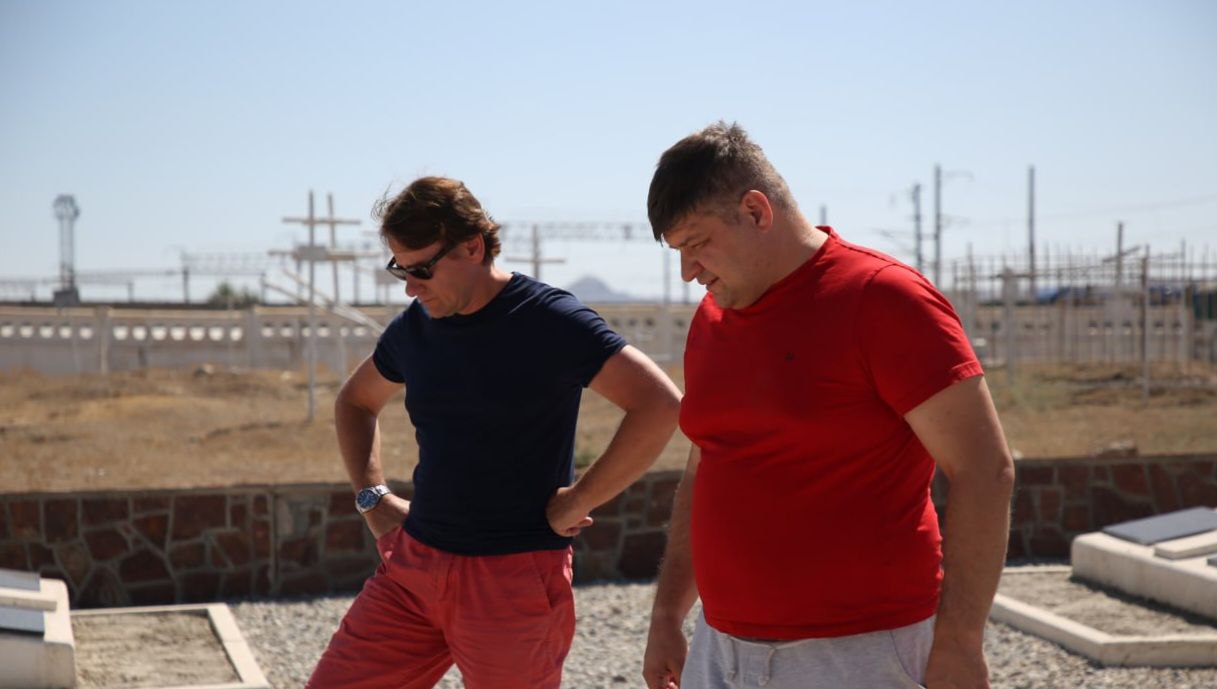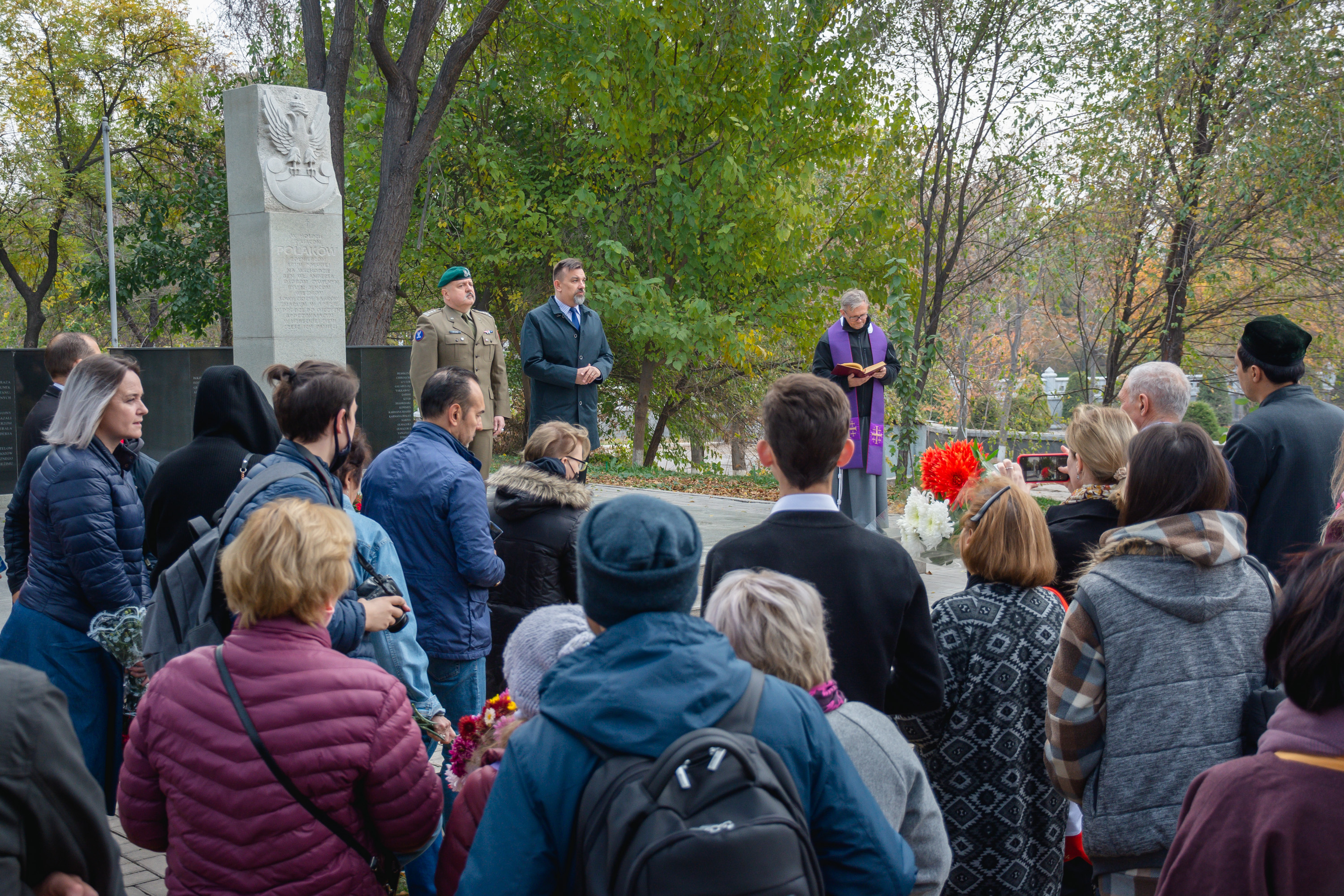
About the project


Soviet exiles are usually associated with cold lands of Siberia and Kazakhstan. This is where Poles deported by Soviet authorities from eastern territories of the Second Polish Republic in 1940-1941 ended up. How did so many Polish citizens come to be in Uzbekistan during the Second World War? What is the reason for such a high number of Polish cemeteries scattered across the territory of this former Soviet republic? We encourage you to discover the project bythe Sybir Memorial Museum, the Museum of the Second World War in Gdańsk, and the Embassy of the Republic of Poland in Tashkent titled “Polish cemeteries in Uzbekistan”.

The project of digitalisation of Polish War Cemeteries in Uzbekistan and the creation of a website dedicated to Polish memorial places was an initiative of Radosław Gruk, the Ambassador of the Republic of Poland in Uzbekistan. The project was carried out in cooperation with the Sybir Memorial Museum, the Museum of the Second World War in Gdańsk and the Embassy of the Republic of Poland in Tashkent. The project is realised in the frame of the Polish-Uzbekistan History Commission founded in 2023.
The history of the Polish People in Uzbekistan is related to the creation of an army, which was authorised by USSR authorities after an agreement with Poland signed on July 30th 1941 (the so-called Sikorski-Majski agreement). This agreement restored diplomatic relations between both countries. The signing of the Polish-Soviet agreement was prompted by the new political situation caused by the outbreak of the German-Soviet war (June 22, 1941) and the losses suffered by the Red Army. The anti-German coalition, especially Great Britain, took advantage of the new conflict to press for the need to regulate mutual relations between the states fighting against the Third Reich. Although the agreement raised many objections from some parts of the Polish émigré community, in reality, it gave hundreds of thousands of deportees a chance to leave their place of deportation.
The official establishment of the Polish Armed Forces in the Soviet Union took place on August 14th 1941. The Soviet side designated areas around Tarischev, Koltubanka, and Buzuluk as sites of the formation of military divisions. These areas were characterised by poor infrastructure, so sufficient barracks were nowhere to be found. These areas had poorly developed infrastructure and therefore lacked sufficient barracks facilities. There were significant problems with the supply of the increasingly numerous groups of volunteers. The future soldiers, exhausted by hard labor and diseases in the labor camps and exile, first had to rebuild their health and regain their strength. This was not easy, as there was a shortage of food, clothing, and medicine. Additionally, they had to endure harsh climatic conditions - especially in winter, when temperatures in the steppe climate dropped significantly below zero Celsius degrees.

In view of the situation, the Polish ambassador in Moscow, Stanisław Kot, met several times with Vyacheslav Molotov and Joseph Stalin, attempting to negotiate better conditions for the army, including increasing food rations and the number of Polish divisions. However, he did not obtain agreement on these demands. A breakthrough came only with General Władysław Sikorski's visit to Moscow, where he met with Stalin on November 30, 1941. After difficult negotiations, it was finally agreed that the Soviet side would increase the number of food rations issued and allow the forming units to be relocated to Central Asia, where the winter was not as harsh. Between January 15 and February 25, 1942, the Polish army was transported to the southern parts of the Soviet Asian republics, mainly to the area of present-day Uzbekistan.

The road south was not easy. During the relocation many soldiers died, as their weakened bodies ravaged by illnesses could not handle poor transport conditions. The new location did not solve all organisational issues either. For a change, the climate here was too hot. This led to further deaths of future soldiers, whose bodies were weakened by their stay in labour camps and in exile. Malnutrition and poor sanitary conditions in combination with warm climate led to an epidemic of transmissible diseases. The dead were often buried in mass graves. However, unlike the Soviet authorities, the Polish side ensure appropriate documentation of burial sites. Due to that we have the list of the dead people.
Difficult living conditions and deteriorating Polish-Soviet relations led to the evacuation of first soldiers units beyond the Soviet Union in March and April 1942. Apart from soldiers, civilians, mainly women and children, were also leaving the empire. The next evacuation wave came between August 5th and August 25th 1942. A total of 116 000 Poles, including 78 000 soldiers, managed to escape the Soviet Union. After several months of stationing of the Polish army in the territory of today's Uzbekistan, 17 in total Polish military cemeteries remained.

In 1990s, after the collapse of the Soviet Union, the Polish company Budmex took up the task of preserving and protecting Polish military cemeteries in Uzbekistan. All these memorial places have been designed according to one, common architectural concept.
We encourage to familiarize yourself with the history of Polish cemeteries in Uzbekistan and the history of the Polish population in this part of the world during the Second World War.

tel.: +48 58 323 75 20
e-mail: sekretariat@muzeum1939.pl

tel.: + 48 85 672 36 01
e-mail: sekretariat@sybir.bialystok.pl

tel.: +998 78 120 86 51
